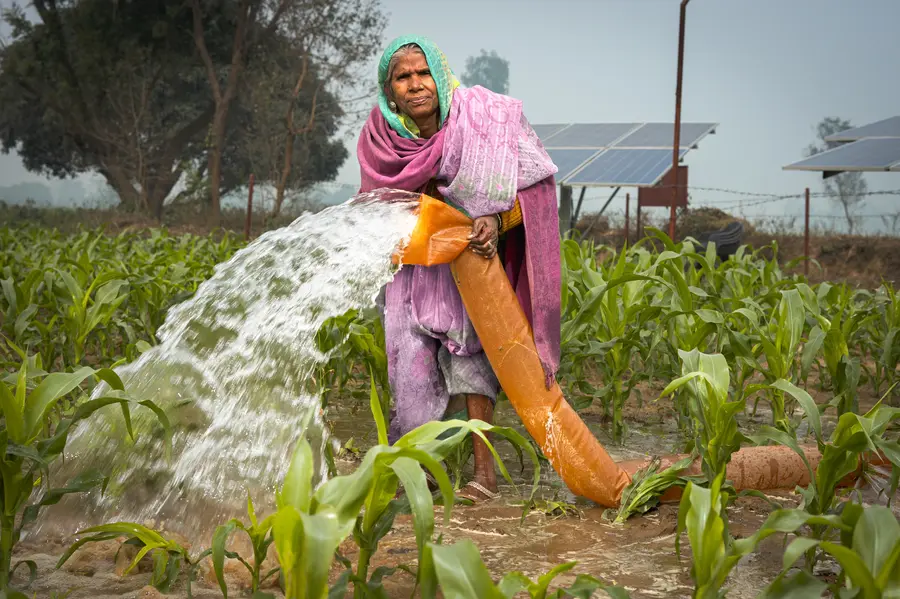Energy Partners will upgrade Clover’s Queensburgh factory with a new, state-of-the-art 10MW ammonia refrigeration system on a EUR 7,93 million servitisation contract, estimated to increase the plant’s Coefficient of Performance by 30% compared to the baseline, revealing the potential of Refrigeration-as-a-Service for industries.
Overview
The need: The client, Clover, is in the process of consolidating its manufacturing capacity with the project “Scencillo”.
In the process, it is upgrading the Clover Queensburgh factory in Durban, South Africa to handle a larger part of the production volume. The existing refrigeration system is at its end-of-life, using outdated technology and is short of capacity to handle the new production load.
The solution: Installing an all-new solar-assisted two-stage ammonia refrigeration system using modern control technology and limited ice storage for temperature stability, also with waste heat recovery to hot water. This will be done without any interruption in production.
Benefits: The new system will operate from higher suction pressures, offering better control and a new compressor technology that will result in a 30% increase in its coefficient of performance (COP). At the same time, the use of waste heat to generate hot water will save on steam consumption, and the solar PV system will provide low-cost sustainable electricity to help drive lower operational costs.

Background
Clover is the biggest dairy company in South Africa. The company is 110 years old and has 15 facilities in South Africa, taking 30% of the country’s dairy market. This development is part of a bigger project by Clover to consolidate its facilities in South Africa.
The investment in Durban is just the first of many developments that will transform the way Clover makes their products for the market and if successful, potentially leading to further CaaS opportunities in the group.
Contract information
This project is the largest single CaaS investment Energy Partners has made since conceiving the idea of servitisation of cooling. It includes a Solar PV PPA as well as a steam outsourcing agreement to provide the client with a total utility solution with no upfront capital investment.
The contract was signed in 2021 with project completion estimated for 2022. It is a 20-year contract which includes all utilities and guarantees the client a 98% uptime. The price structure is a fixed availability fee that includes maintenance and a variable consumption charge based on cooling use. In terms of finance source, a combination of commercial debt and equity was used.
The contract negotiations for a project of this nature, in particular the aspects dealing with liability and insurance, required some out-of-the-box thinking and represented a breakthrough that will benefit many of Energy Partner’s projects in the future, setting a precedent for Refrigeration-as-a-Service for industries.
Project information
Energy Partners will build, install and maintain a two-stage ammonia refrigeration system complete with solar PV assist (1,400kW) and heat recovery for hot water.
The ammonia refrigeration system has a total capacity of 9,850MW with approximately half of that at a suction temperature of 0°C and the remainder at -8°C. The system has been designed for the future installation of a low-stage component operating at -30°C. The -8°C circuit is used to build ice on a thermal storage plant that stabilises the chiller water temperature to processes in the factory.
The 0°C suction stage is used for the primary cooling of the chilled water circuit before entering the thermal storage system. It also provides chilled water for the factory’s HVAC air-handling units and 200kl of hot water is generated daily for the boiler system.
The system uses evaporative condensing and screw-type compressors with variable-speed drives on the lead machines to provide high-efficiency cooling. Heat is recovered to preheat the boiler supply water, reducing boiler fuel consumption.
Benefits
The project investment for the cooling system totals ZAR136 million (EUR7,93 million) and the new system is expected to realise a 30% savings in energy, as compared to the baseline. This will have a significant impact for the client considering that their annual energy consumption is a massive 9’000’000 kWh.
The retrofit will also have a great impact on reducing greenhouse gas (GHG) emissions, saving 4,255 tons/ year on the refrigeration and solar side and 1,950 tons/year thanks to the additional heat recovery to be used for hot water.







